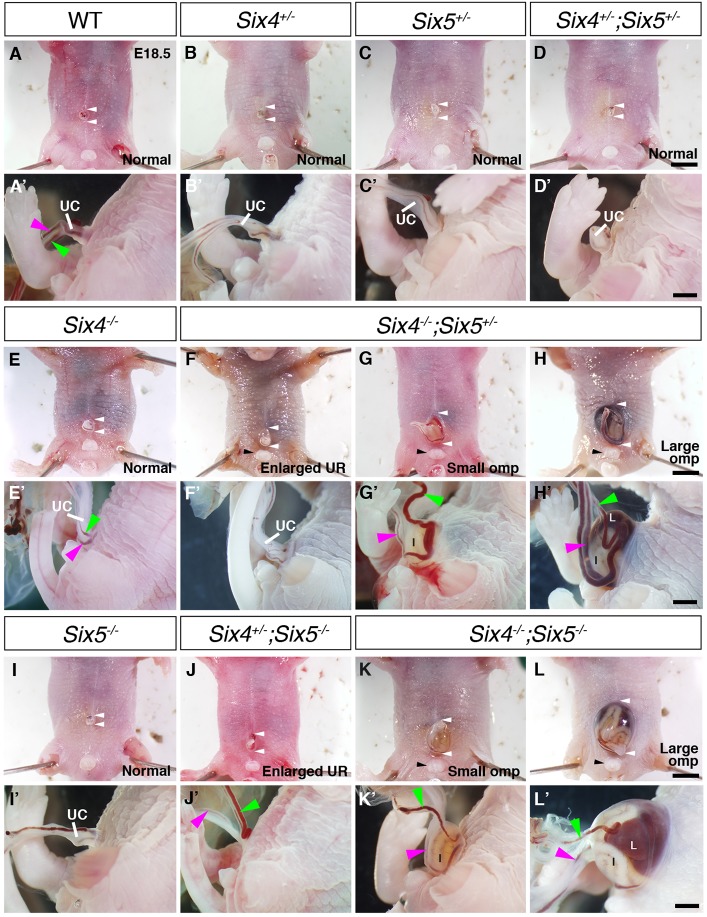Fig. 1.
Abdominal wall closure defects in Six4−/−;Six5+/− and Six4−/−;Six5−/− fetuses. (A-L′) Ventral (A-L) and left side (A′-L′) views of the umbilical region in wild-type (A,A′), Six4+/− (B,B′), Six5+/− (C,C′), Six4+/−;Six5+/− (D,D′), Six4−/− (E,E′), Six4−/−;Six5+/− (F-H′), Six5−/− (I,I′), Six4+/−;Six5−/− (J,J′) and Six4−/−;Six5−/− fetuses (K-L′) at E18.5. White arrowheads indicate the positions of the anterior and posterior margin of the umbilical ring (UR). Most wild-type and Six4−/− fetuses exhibit normal fusion of the vitelline (green arrowheads) and umbilical vessels (magenta arrowheads) in the umbilical cord (UC) (A,A′,E,E′). Six4−/−;Six5+/− fetuses show anteriorly enlarged UR (F-H), and fetuses with small or large omphaloceles (omp) have separated vitelline and umbilical vessels (G′,H′). All Six5−/− fetuses have normal UC and UR (I,I′). A small number of Six4+/−;Six5−/− fetuses have separated vitelline and umbilical vessels (J′), as well as enlarged UR (J). All Six4−/−;Six5−/− fetuses exhibit omphalocele with protrusion of the liver and/or intestine (K-L′). Their vitelline and umbilical vessel do not fuse (K′,L′). The outer genital organ forms normally in Six4−/−;Six5+/− and Six4−/−;Six5−/− fetuses (black arrowhead in F-H,K,L). I, intestine; L, liver. Scale bars: 2 mm in D,H,L; 1 mm in D′,H′,L′.

